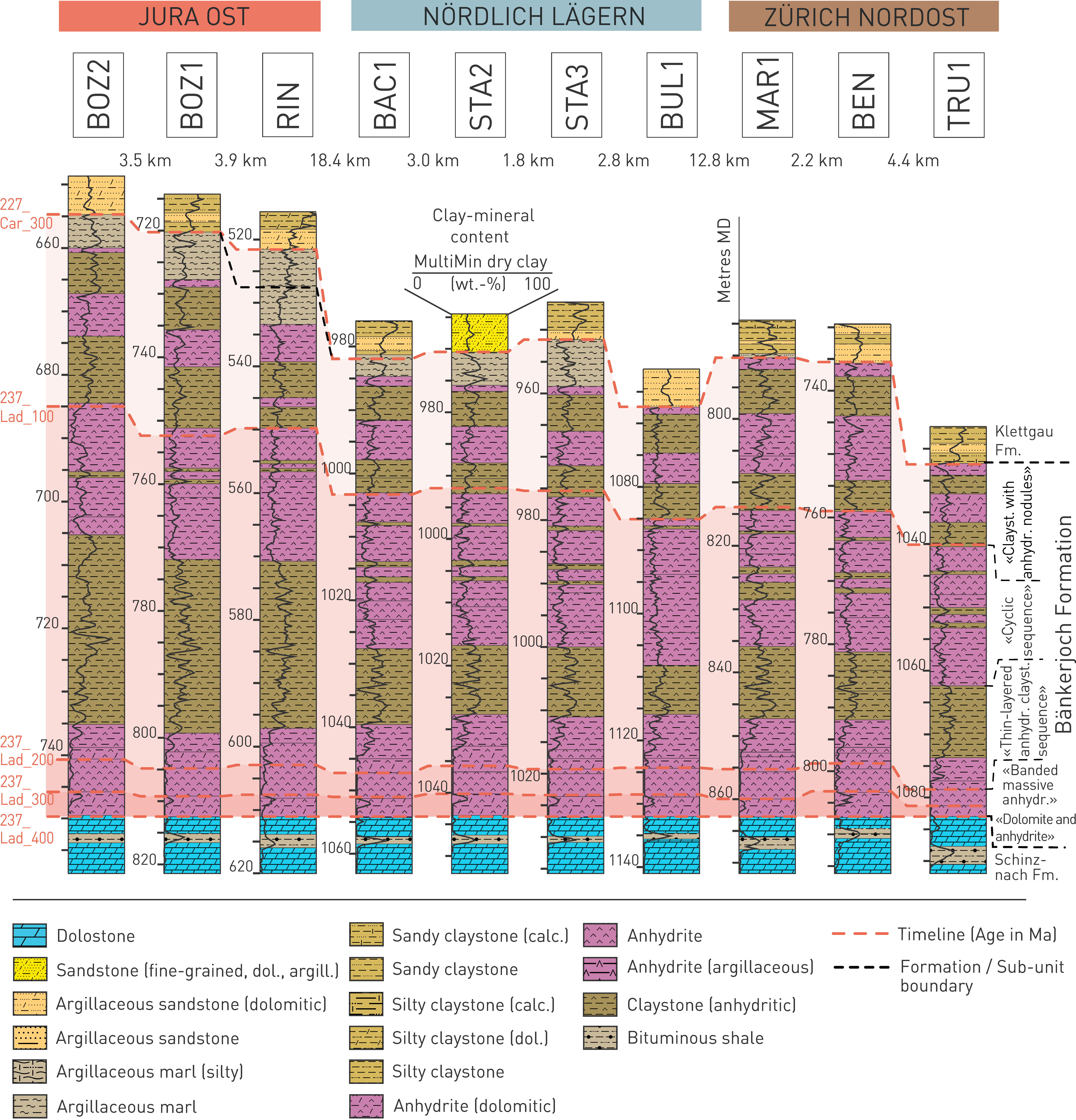The Bänkerjoch Formation (former «Gipskeuper», part of the Keuper Group) exists in all three siting regions with similar characteristics and a thickness in the range between ca. 55 and 95 m (Fig. 4‑10). The unit mostly consists of anhydrite (close to the surface and in outcrops also gypsum), claystone and dolostone (Fig. 4‑11). From bottom to top, the formation comprises cyclic successions of chicken-wire anhydrite, dolomitic claystone with thin anhydritic layers and claystone (Dronkert et al. 1990; Fig. 4‑12).

Fig. 4‑11:Stratigraphic borehole correlation of the Bänkerjoch Formation
For lithological nomenclature refer to Naef et al. (2019). Clay-mineral content after Becker & Marnat (2024) . Some of the boundaries and lithologies as discussed in the original reports were adjusted to integrate all presented borehole data.
The Bänkerjoch Formation has been subdivided into five informal subunits (Jordan et al. 2016a, 2016b):
«Dolomite and anhydrite»: The lowermost subunit of the Bänkerjoch Formation consists of an intercalation of dolomitic and anhydritic layers with some argillaceous marls with anhydritic nodules (Fig. 4‑12a).
«Banded massive anhydrite»: This subunit mostly consists of massive to banded anhydrite with some argillaceous to dolomitic interbeds (Fig. 4‑12b).
«Thin-layered anhydrite claystone sequence»: This subunit mostly consists of a succession of finely laminated anhydritic claystone, argillaceous, dolomitic marl and anhydrite (Fig. 4‑12c). The anhydrite occurs mostly in the form of beds with a nodular to chicken-wire fabric.
«Cyclic sequence»: This subunit includes sedimentary rocks that represent complete and mostly incomplete cycles with a thickness of mostly a few decimetres (Fig. 4‑12d & e). A typical complete cycle starts with chicken-wire anhydrite with anhydritic nodules in a matrix of claystone (anhydritic). It is followed by dolomitic claystone and nodular to laminated anhydrite and ends with a claystone (anhydritic) traversed by anhydrite veins.
«Claystone with anhydrite nodules»: This uppermost subunit of the Bänkerjoch Formation is lithologically the most heterogeneous (Fig. 4‑12f & g). It is mostly characterised by silty claystone (anhydritic or dolomitic) with interbeds of anhydrite and dolostone (anhydritic) to dolomitic marl. The anhydrite occurs in form of single nodules of mm to > 1 dm size, veins and densely packed nodular beds.

